I have featured several Amantitae fungi previously in this journal and here is another one. Why such a bias? This genus comprises large, sometimes stately mushrooms that are often easy to recognise and hence I can present them with confidence. The subject of this latest post is no exception.
Back in August I speculated the fungi season might be underway early after such a wet July (see here), but not so as things turned out. There followed an exceptionally mild and dry “Indian summer”, succeeded by a wet late autumn. The result, moving into November is a luxuriant profusion of mushrooms wherever we go to seek them out. Everywhere that is but the Fly Agaric spectacle at North Leigh Common (see here), that for a second year running was wiped out at its peak by West Oxon District Council contractors; I suppose when the job sheet says bracken has to be cut … absolutely mindless!!!
After tracking the Verdigris Agaric through its fruiting cycle in south-east Oxon (see previous post), I switched attention to Oakley Wood (SP612118) in the Bernwood Forest complex of butterfly fame that lies just across the county border around 20 minutes from my home. Here, amongst quantities of Milkcaps, Brittlegills and other unidentified mushrooms stood out even greater numbers of False Deathcap (Amanita citrina – see here). There were dozens of them in the areas closest to the Forestry England car park that I searched, perhaps hundreds or even thousands across the site as a whole.
A frequent Amanita from August to November across much of the British Isles and continental Europe, the Latin name signifies the citreous yellow tinge of the caps. That quality is not easy to capture pictorially in subdued light given the paleness of the subject, but in the field readily distinguishes this mushroom from Parasols (see here) that they superficially resemble. Rather than go into descriptive detail, herewith is more of the fruiting cycle.
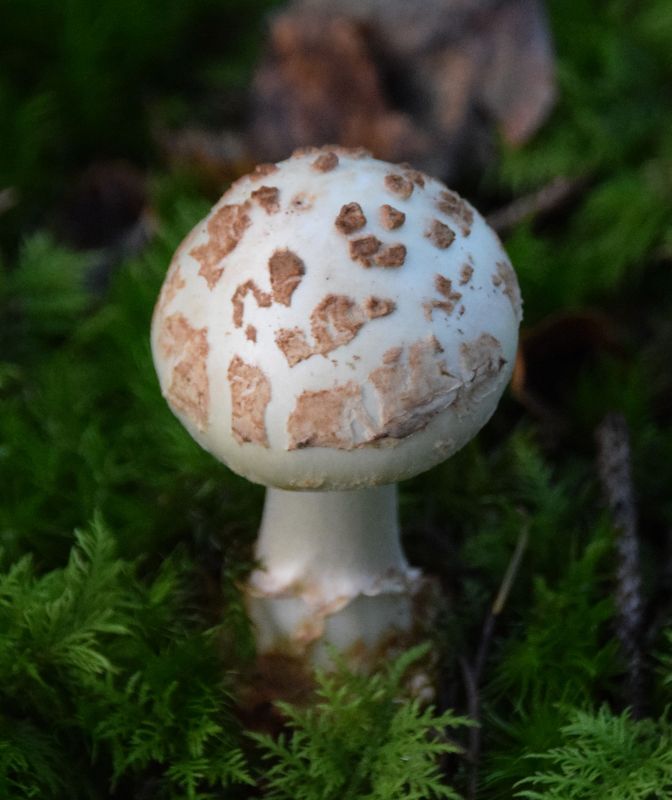

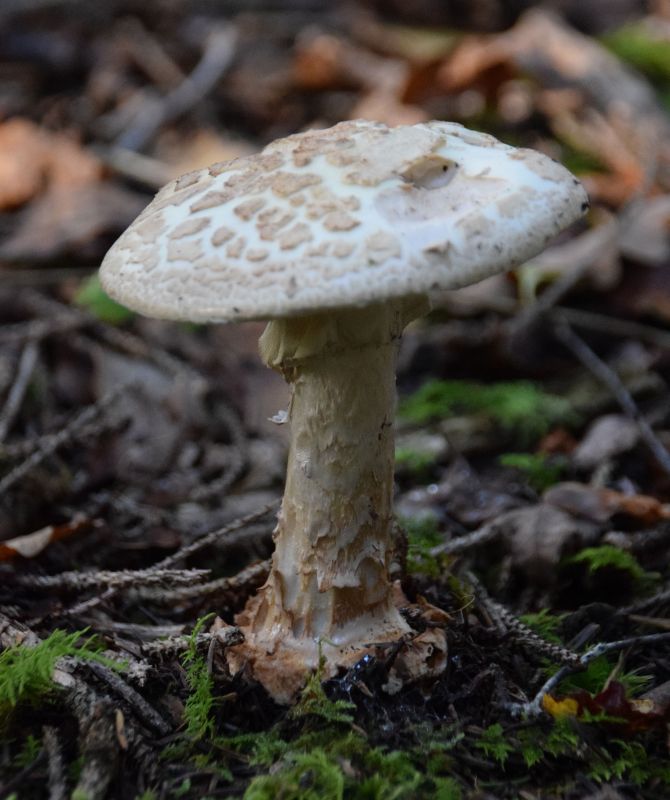
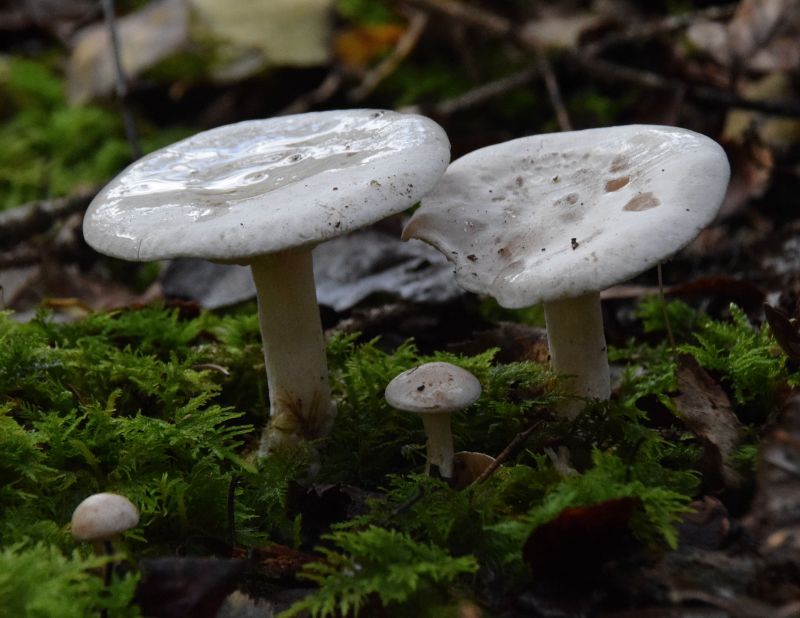

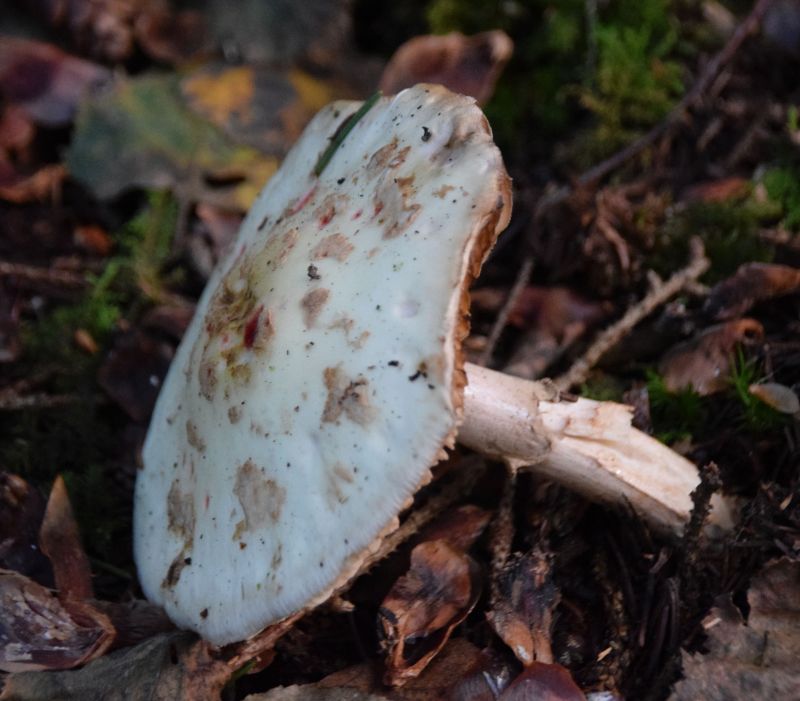
As the name suggests this is not an edible mushroom but neither is it seriously toxic like the Deathcap (Amanita phaloides) itself (pictured below), one of my favourite finds when fungi hunting. Simply put if you should be unwise enough to consume one of the latter (see here) you are a goner … end of story … kaput! But the two are readily distinguishable in the field, the dangerous one being slimy and without universal veil fragments on the cap.

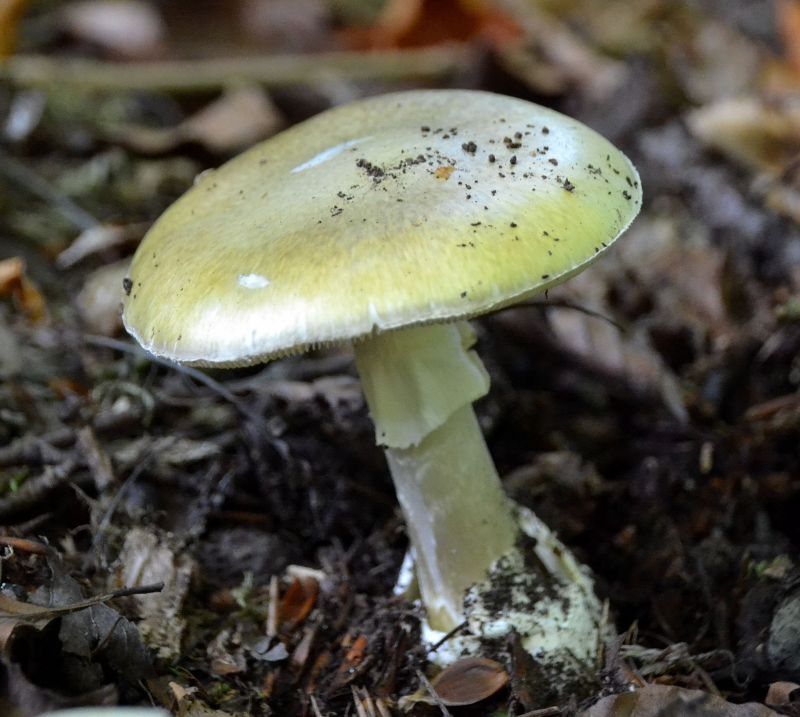
Potentially even more alarming is the aptly named Destroying Angel (see here) that a white form of A citrina is also said to resemble. The toxins both the above mentioned beasts contain at first cause severe diarrhoea, nausea and stomach pains. Cruelly the symptoms are said to fade away for a while, tricking the victim into thinking they are recovering. Then they return with a vengeance by when it is almost certainly too late. Kidney and liver failure are already advancing. These ultimate Amanitae have no known antidote, so coma and eventual death are pretty inevitable.
Fortunately the Destroying Angel is mostly found in upland regions so is unlikely to occur in Oxfordshire. I myself have yet to find one anywhere, though there were some similar looking items in Oakley Wood on these two days. Not to worry. I would in any case never consider eating a white wild mushroom. Identifying them as previously noted is an imprecise art. All of the fungi fruiting cycle posts herein have received greatly increased referrals this autumn.

